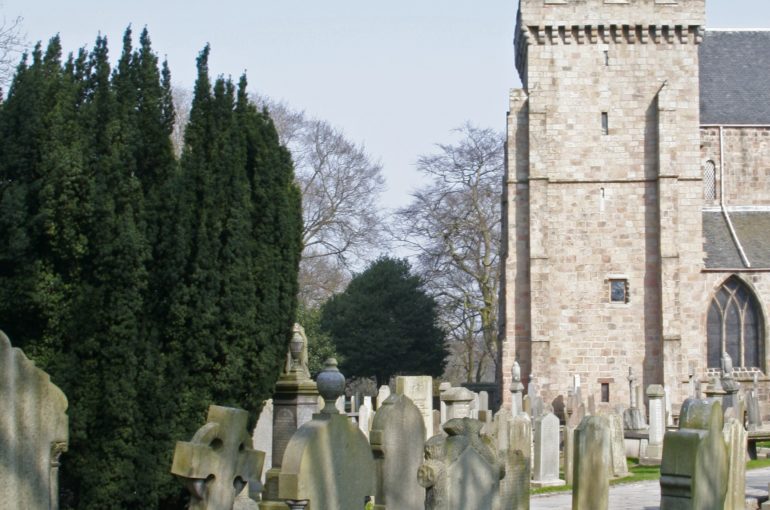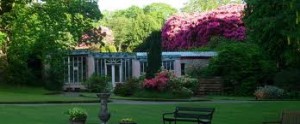Yew tell ’em. Was Pontius Pilate born in Scotland?

Was Pontius Pilate born in Scotland?
 THIS is a story of two Roman camps. One is a beautiful country house and restaurant in Callander; the other is about the man who condemned Jesus Christ to his death.
THIS is a story of two Roman camps. One is a beautiful country house and restaurant in Callander; the other is about the man who condemned Jesus Christ to his death.
I’m standing under a yew tree in a church yard in Fortingall, in remote Glen Lyon, the geographical centre of Scotland.
The tree is more than 5000 years old and some say Pontius Pilate played under it as a child.
The legend _ and it probably is more myth than reality _ suggests that Pontius Pilate was born in Scotland. He may also have shared the royal blood of Metallanus, the Caledonian king at the time of Christ.
The legend is that Pilate’s father had his wicked way with Metallanus’s daughter.
An 1899 article in the New York Times refers to the common Perthshire legend that Pilate’s father was an ambassador to the Caledonians and that his son was born in Fortingall.
Searching for proof in Fortingall
There’s nothing in the tiny hamlet to either prove, or refute, the question of was Pontius Pilate born in Scotland?
But car after car pulls up at the quaint church. People get out and walk around the tree. They investigate the names on the gravestones and sit by the fire at the warm and friendly Fortingall Hotel.
The tree is thriving. It is possibly the oldest tree in Europe and cuttings from it are being planted throughout Scotland.
The yew is a primordial tree and has at times been revered as the tree of life. Christ’s cross was made from a yew tree.
They were often planted near hill forts, as was this tree. The Fortingall Yew is near Dun Geal, the home of King Metallanus, a camp possibly used by the Romans at the time of Christ.
Scottish historian Neil Hooper is doing his best to expose the Pontius Pilate legend as a joke.
“For example, in the early 19th century, one of the classically educated ministers of Fortingall who claimed wrongly that the earthworks near the village were a Roman camp may have remonstrated with the village children damaging the ancient yew tree and emphasised that the tree was older than the Romans, you know, like Pontius Pilate,” Hooper wrote on The Times website.
 “By a process of Chinese whispers this got translated into `The Minister says Pontius Pilate was born under the yew tree!’ but please don’t say I `believe’ this!”
“By a process of Chinese whispers this got translated into `The Minister says Pontius Pilate was born under the yew tree!’ but please don’t say I `believe’ this!”
A detour led us to Fortingall
We stumble on Fortingall by accident. Driving from Callander to Pitlochry we decide to take a few detours. After all, in my experience that is often the best way to make great travel discoveries.
From Callander we’d headed to Lochearnhead and then Killin, along narrow, often winding, roads with lush, green fields on either side. We drove along the north shore of Loch Tay for 20km before reaching Fearnan and the signpost that took us to Fortingall.
We spent two days in Callander staying at the Roman Camp Country House & Restaurant. It is a romantic fantasy from the time you lift the latch and walk through the undersized oak front door. The house itself is a rare combination of beautiful gardens, history and style.
Inside it is snug and cosy. The rooms are filled with antiques and furniture so comfortable that when you fall into a chair, you stay. The lounge chairs hug in the same way an old friend hugs when they haven’t seen you for a while.
Tradition is embraced. I imagine the feel of the hotel has not changed much since J.M. Barrie stayed here and penned parts of Peter Pan. If you want, you can stay in the same room that The Beatles did.
Welcome to Peter Pan’s world
The Roman Camp sits in 8ha of gardens on a bend in the River Teith in the heart of Callander. Built as a hunting lodge in 1625, it is now one of Scotland’s most sought-after retreats and a thriving wedding venue.
The name comes from the earthworks that can be seen across the meadow to the south of the main buildings. These are Roman and, indeed, there is a Roman fort site to the north of the town.
The bedrooms can be found off the long and winding central corridor. The twist and turns show how the building has been extended over the years.
The bedrooms look out on to the gardens Lord and Lady Esher built. The magnificent rhododendron garden, know as Sir Harry’s Garden (even though Sir Harry’s identity is a mystery), is stunning.
The restaurant is regarded as one of Scotland’s best dining experiences.
The menus include roast quail, crushed purple potatoes, smoked bacon sauce, roast rib of scotch beef, Yorkshire pudding, jus roti and rhubarb three ways. It’s easy to see why it has won a slew of awards.
Callander itself is a typical Scottish village, with good pubs, a busy high street and friendly folk.

